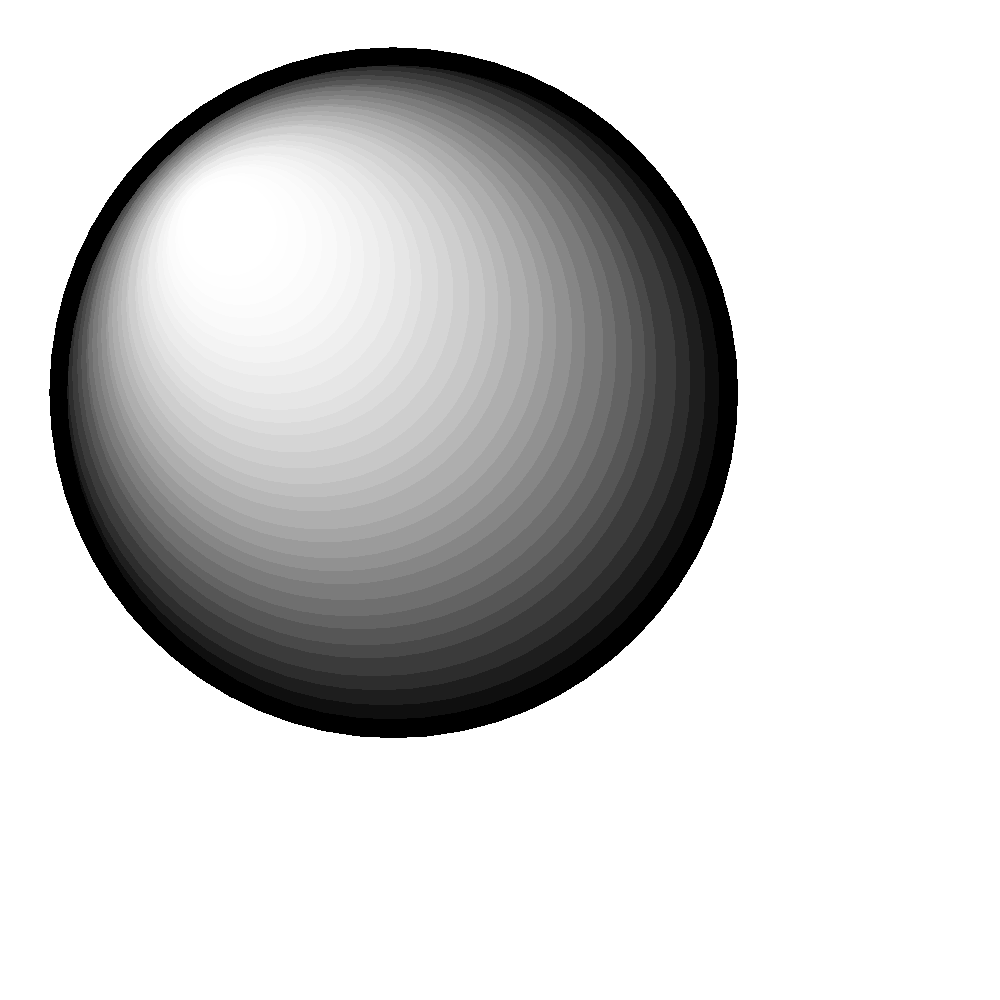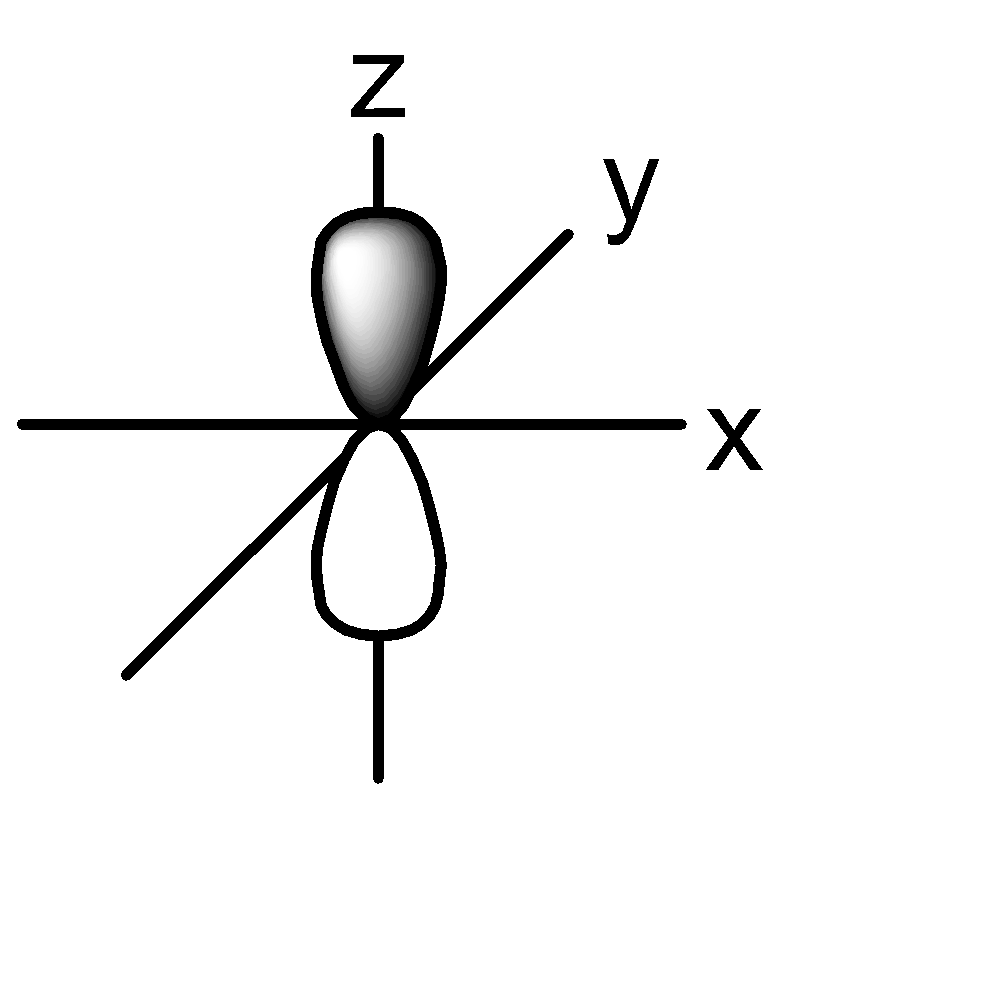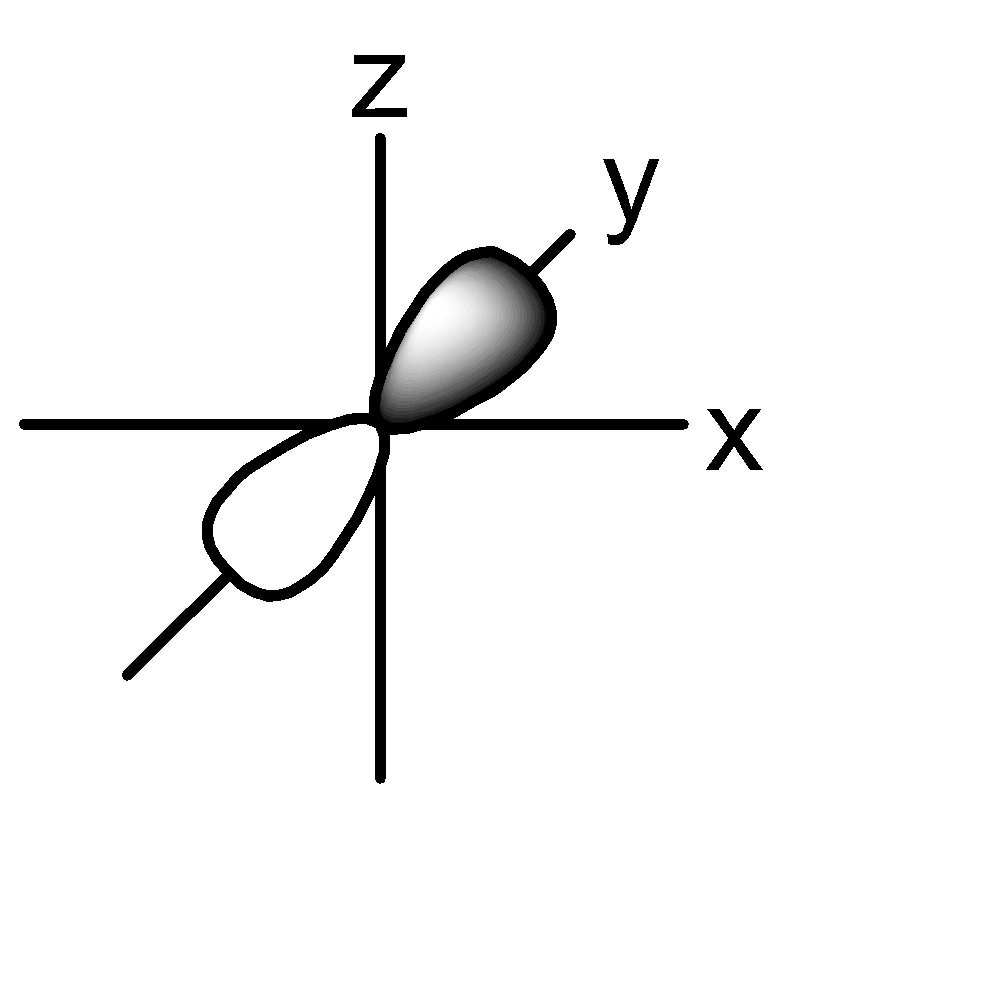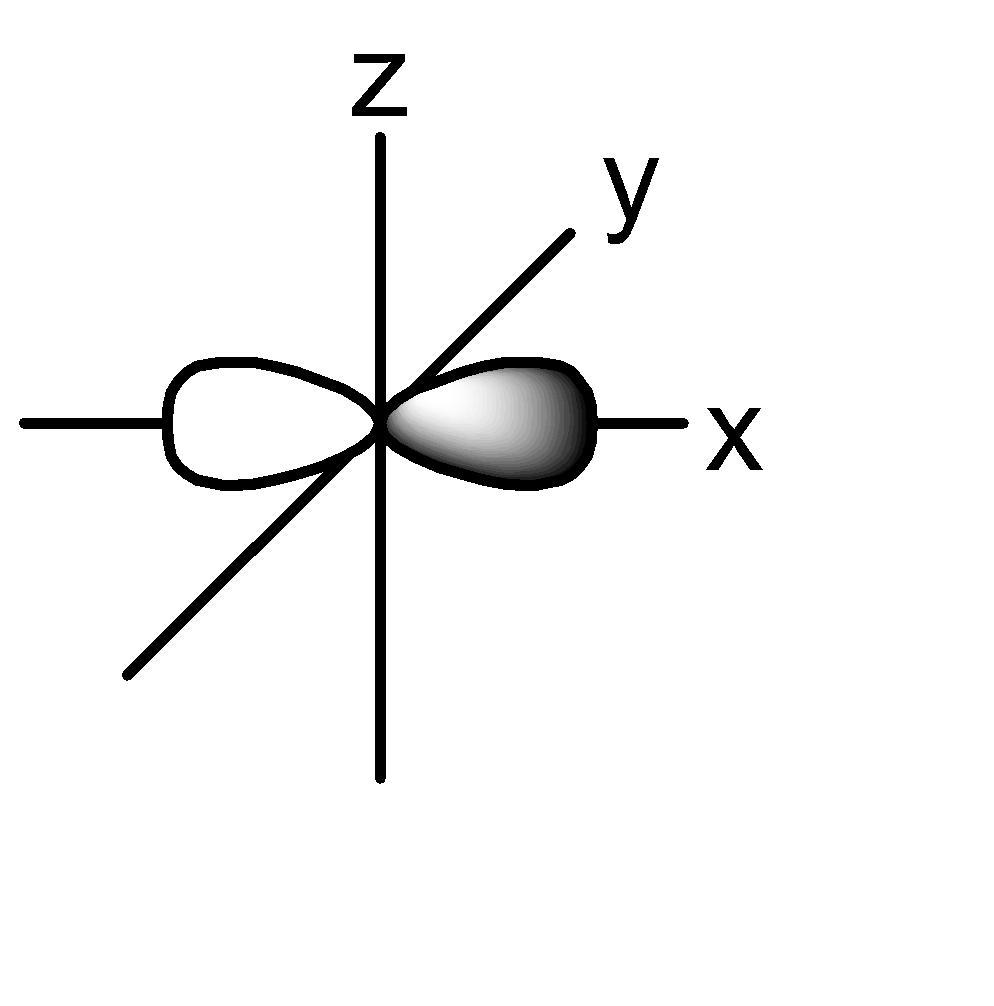
Draw shapes of ‘2s’ and ‘2p’ orbitals.
Answer
498.6k+ views
1 likes
Hint: An orbital can be defined as a three - dimensional space around the nucleus where the possibility of finding the electron is very high. These orbitals are of 4 types and are distinguished on the basis of their geometries.
Complete step by step answer:
The 4 main types of orbitals are named ‘s’, ‘p’, ‘d’ and ‘f’. Each of these orbitals have unique geometrical structures and are repeated multiple times in a given atom, depending on its electronic configuration.
The shapes of these of the s and p orbitals can be described as follows:
S orbital: spherical in shape. There is only one possible configuration.
P orbital: consists of two lobes which are lying on either sides of a plane that is passing through a nucleus. There are 3 possible configurations.
The shape of the orbital remains constant irrespective of the shell in which it is present. This means that the shape of 1s, 2s, 3s orbitals are all the same. Same is the case with p, d, f orbitals.
Hence the shape of 2s and 2p orbitals can be given as:
2s:

2p:



Note:
Another way of explaining an orbital is as a wave function that is capable of describing the characteristic properties of no more than two electrons which are in the vicinity of an atomic nucleus or of a system of nuclei.
Complete step by step answer:
The 4 main types of orbitals are named ‘s’, ‘p’, ‘d’ and ‘f’. Each of these orbitals have unique geometrical structures and are repeated multiple times in a given atom, depending on its electronic configuration.
The shapes of these of the s and p orbitals can be described as follows:
S orbital: spherical in shape. There is only one possible configuration.
P orbital: consists of two lobes which are lying on either sides of a plane that is passing through a nucleus. There are 3 possible configurations.
The shape of the orbital remains constant irrespective of the shell in which it is present. This means that the shape of 1s, 2s, 3s orbitals are all the same. Same is the case with p, d, f orbitals.
Hence the shape of 2s and 2p orbitals can be given as:
2s:

2p:



Note:
Another way of explaining an orbital is as a wave function that is capable of describing the characteristic properties of no more than two electrons which are in the vicinity of an atomic nucleus or of a system of nuclei.
Latest Vedantu courses for you
Grade 9 | CBSE | SCHOOL | English
Vedantu 9 CBSE Pro Course - (2025-26)
School Full course for CBSE students
₹37,300 per year
Recently Updated Pages
Master Class 10 Science: Engaging Questions & Answers for Success

Master Class 10 Social Science: Engaging Questions & Answers for Success

Master Class 10 Maths: Engaging Questions & Answers for Success

Master Class 10 English: Engaging Questions & Answers for Success

Class 10 Question and Answer - Your Ultimate Solutions Guide

Master Class 9 General Knowledge: Engaging Questions & Answers for Success

Trending doubts
State and prove Bernoullis theorem class 11 physics CBSE

1 ton equals to A 100 kg B 1000 kg C 10 kg D 10000 class 11 physics CBSE

State the laws of reflection of light

One Metric ton is equal to kg A 10000 B 1000 C 100 class 11 physics CBSE

Difference Between Prokaryotic Cells and Eukaryotic Cells

1 Quintal is equal to a 110 kg b 10 kg c 100kg d 1000 class 11 physics CBSE




